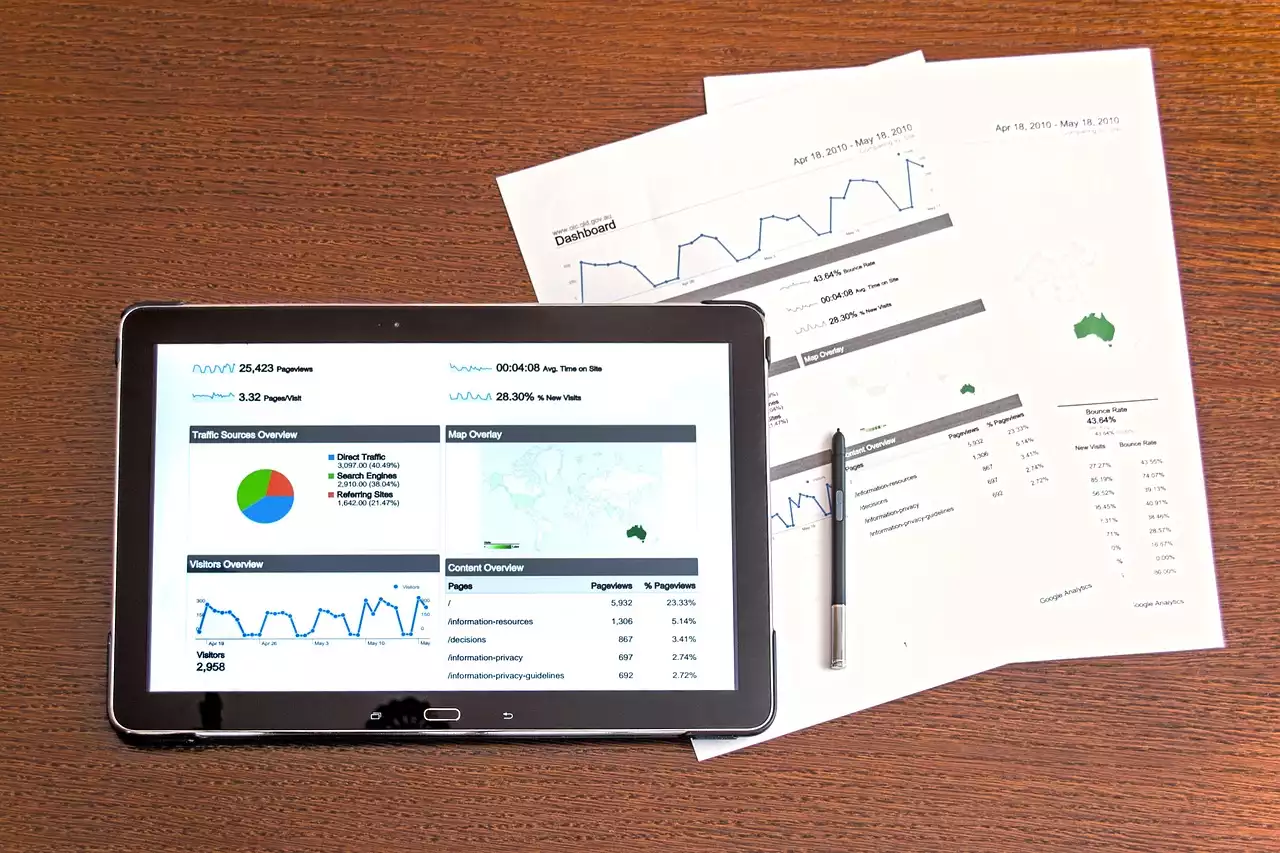The importance of analytics in mobile marketing
Analytics data plays a crucial role in mobile marketing by providing businesses with insightful data on mobile user behavior that allows them to make data-driven decisions. Analytics data can help you understand how your mobile marketing efforts are performing, provide insights into user behavior, and identify areas for optimization. It's essential to track and analyze your mobile marketing data because it allows you to understand the effectiveness of your marketing campaigns and make informed decisions about future mobile marketing efforts.
Without analytics data, you're essentially flying blind. You won't know how your mobile marketing campaigns are performing, which channels are the most effective, or which elements of your mobile marketing strategy need to be optimized. Analytics data helps you measure the impact of your mobile marketing campaigns, identify trends, and determine which strategies are most effective.
Analytics data can also help you track user behavior across different mobile devices and platforms, such as mobile apps and mobile websites. This information is crucial because it allows you to tailor your mobile marketing campaigns to your target audience and improve the user experience.
In summary, analytics data is essential to mobile marketing success because it enables businesses to measure the impact of their marketing campaigns, track user behavior, and identify areas for optimization.
Types of mobile marketing analytics
There are several types of mobile marketing analytics that businesses can use to track and measure the performance of their mobile marketing campaigns. These include:
Mobile app analytics
Mobile app analytics provides insights into how users are interacting with your mobile app. This data includes metrics such as the number of downloads, user retention rates, user engagement levels, and in-app purchases. Mobile app analytics can help you understand how users are engaging with your app and identify areas for improvement.
Mobile ad analytics
Mobile ad analytics provides insights into the performance of your mobile advertising campaigns. This data includes metrics such as click-through rates, conversion rates, and cost per acquisition. Mobile ad analytics can help you optimize your advertising campaigns for better performance and ROI.
Mobile website analytics
Mobile website analytics provides insights into how users are interacting with your mobile website. This data includes metrics such as bounce rates, page views, and conversion rates. Mobile website analytics can help you optimize your mobile website for better user engagement and conversions.
Location-based analytics
Location-based analytics provides insights into the geographic location of mobile users. This data can help businesses optimize their mobile marketing efforts based on the location of their target audience. For example, businesses can use location-based analytics to send targeted mobile advertising campaigns to users within a specific geographic area.
Understanding your audience through analytics
One of the most significant benefits of using analytics data in mobile marketing is that it allows you to understand your audience better. By analyzing data on user behavior, you can gain insights into what motivates your audience, what they're interested in, and what they respond to.
For example, mobile app analytics can provide insights into how users are engaging with your app. You can analyze data on user behavior, such as which features they're using the most, which features they're not using, and which features are causing them to abandon the app. With this data, you can optimize your app to better meet the needs of your target audience.
Similarly, mobile website analytics can provide insights into what content your audience is engaging with the most. You can analyze data on which pages users are spending the most time on, which pages are causing them to leave the site, and which pages are driving the most conversions. With this data, you can optimize your mobile website's content to better engage your target audience and increase conversions.
Location-based analytics can also provide insights into your audience's behavior. For example, if you're a restaurant, you can use location-based analytics to understand where your customers are coming from and what their preferences are. You can use this data to tailor your mobile marketing campaigns to their specific needs and interests.
Analyzing mobile app engagement
Mobile app engagement is a critical metric in mobile marketing because it measures how users are interacting with your app. Mobile app analytics can provide valuable insights into app engagement, such as the number of active users, the frequency of app usage, and the duration of app sessions.
Analyzing app engagement data can help you identify areas for improvement in your app. For example, if you notice that users are frequently abandoning the app after a few seconds, you may need to improve your app's onboarding process to make it more intuitive and user-friendly. Similarly, if you notice that users are spending a lot of time on a particular feature, you may want to optimize that feature to provide a better user experience.
Another critical aspect of mobile app engagement is user retention. User retention measures the percentage of users who return to your app after the initial download. High user retention rates are essential to the success of your mobile app because they indicate that users are finding value in your app and are likely to continue using it.
Measuring mobile ad performance
Mobile ad performance is another critical aspect of mobile marketing, and analytics data can provide valuable insights into how your mobile ads are performing. Mobile ad analytics can help you track metrics such as click-through rates, conversion rates, and cost per acquisition.
Analyzing mobile ad data can help you optimize your mobile ad campaigns for better performance and ROI. For example, if you notice that your mobile ads are not generating a lot of clicks, you may need to optimize the ad copy or adjust the targeting to better reach your audience. Similarly, if you notice that your cost per acquisition is high, you may need to optimize your ad campaigns to reduce costs and improve ROI.
Using analytics to optimize your mobile website
Mobile website optimization is crucial to the success of your mobile marketing strategy. Mobile website analytics can provide valuable insights into how your audience is interacting with your mobile website, allowing you to optimize your site for better user engagement and conversions.
For example, if you notice that users are frequently leaving your mobile website after a few seconds, you may need to optimize your site's load time to improve the user experience. Similarly, if you notice that users are not converting on your mobile website, you may need to optimize your site's content and calls to action to better meet their needs.
Another essential aspect of mobile website optimization is responsive design. Responsive design ensures that your mobile website is optimized for all mobile devices, allowing users to access your site on any device. Responsive design is critical to the success of your mobile marketing strategy because it ensures that your site is accessible to all mobile users, regardless of their device or platform.
Utilizing location-based analytics
Location-based analytics can provide valuable insights into your audience's behavior, allowing you to tailor your mobile marketing campaigns to their specific needs and interests. For example, if you're a restaurant, you can use location-based analytics to understand where your customers are coming from and what their preferences are.
You can use this data to send targeted mobile marketing campaigns to users within a specific geographic area. For example, you can send mobile push notifications to users in the vicinity of your restaurant, offering them a discount or special offer. This type of targeted marketing can be highly effective because it reaches users when they're most likely to be interested in your product or service.
Best practices for using analytics in mobile marketing
To get the most out of your analytics data, there are several best practices that you should follow:
1. Set clear goals: Before you start analyzing your mobile marketing data, you should have clear goals in mind. What do you want to achieve with your mobile marketing campaigns? What metrics will you use to measure success?
2. Choose the right metrics: There are many different metrics that you can track in mobile marketing, but not all of them are relevant to your goals. Choose metrics that are directly related to your goals and that provide meaningful insights into your mobile marketing campaigns.
3. Use a variety of analytics tools: There are many different analytics tools available for mobile marketing, and each tool provides unique insights into user behavior. Use a variety of tools to get a more complete picture of your mobile marketing campaigns.
4. Analyze data regularly: Regular analysis of your mobile marketing data is essential to stay on top of trends and identify areas for improvement. Make sure to analyze your data regularly and adjust your mobile marketing strategy accordingly.
5. Test and optimize: Mobile marketing is an iterative process, and it's essential to test and optimize your campaigns regularly. Use A/B testing to test different elements of your mobile marketing campaigns and optimize for better performance and ROI.
Tools and resources for mobile marketing analytics
There are many different tools and resources available for mobile marketing analytics. Some popular tools include:
1. Google Analytics: Google Analytics is a web analytics service that provides insights into user behavior on your mobile website.
2. Mixpanel: Mixpanel is an analytics platform that provides insights into user behavior in mobile apps.
3. Flurry Analytics: Flurry Analytics is a mobile analytics platform that provides insights into user behavior in mobile apps.
4. Localytics: Localytics is a mobile analytics platform that provides insights into user behavior in mobile apps.
5. App Annie: App Annie is a mobile app analytics platform that provides insights into app performance, downloads, and revenue.









